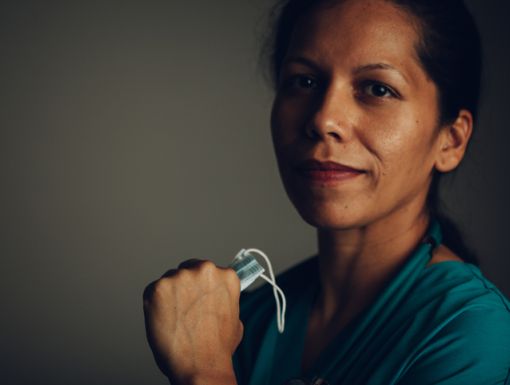
What is the Best Way to Prepare for a Colonoscopy?
When it comes to screening tests, the colonoscopy probably wins the people’s choice award for least favorite.
Many patients avoid routine colonoscopies due to the nature of the test. However, we know that most patients have no symptoms until colon or rectal cancer has progressed. Colorectal cancer is the third most common form of cancer in the United States. In 2021, the American Cancer Society estimates that over 100,000 new cases of colon cancer will be detected, and over 45,000 cases of rectal cancer.
Colon cancer diagnoses are on the rise, especially among younger people. A recent study by the American Cancer Society revealed that young adults born in 1990 have twice the risk for colon cancer and four times the risk for rectal cancer compared to people born in 1950. These are scary figures, and preventative screenings are the single best way to catch issues in your colon before they become serious. If we are able to catch colorectal cancer early on, it gives us a lot of options in terms of how we can treat the cancer. The best scenario is to treat it before the cancer has spread or grown too large to easily treat.
As part of your colonoscopy, your GI doctor will remove polyps that are found in your colon. Polyps don’t necessarily mean you have colon cancer. While some polyps may contain cancer, most do not. However, when we remove polyps, we can prevent colorectal cancer as opposed to most screening tests, which only hope to catch cancer early. Removing the polyps eliminates the risk of having them grow larger and become less manageable especially if they become cancerous.
A major development in the field of public health and cancer prevention took place on May 18, 2021 when the U.S. Preventive Services Task Force provided updated recommendations regarding the age to begin screening for colorectal cancer. Adults should initiate screening for colorectal cancer at the age of 45, according to the new guidelines. This is a significant change by the task force, which previously recommended in its 2016 guidelines that screening for this cancer begin at the age of 50.
Patients with a family history of colon cancer should talk to their doctor about having their colonoscopy at an earlier age or more frequently.
Since colonoscopies are performed under light sedation or “twilight sleep”. In this state, there is no pain or remembrance. On the other hand, at-home preparations are a bit more challenging. Patients consistently express that the procedure was easy and that it’s the preparations beforehand that take their toll. Luckily, it’s all in the privacy of your own home.
The goal of colonoscopy prep is to clean the colon completely so that the physician will have a clear view. The most common preparations include Golytely, Movieprep or Suprep. Basically, all of these involve drinking liquid mixed with medication to cause the bowels to evacuate. This translates into spending some time on the toilet.
Early detection can save your life. Schedule a colonoscopy screening today.
Here are some ways to prepare for a colonoscopy, including the colonoscopy prep:
- Purchase adult wet wipes, water spray or gentle toilet paper to use while you are undergoing the colonoscopy prep.
- Use a straw to drink the prep, or chill it beforehand. Some people find the taste of the colonoscopy prep very unpleasant, and easier to stomach if it is cold or sipped through a straw, thus bypassing the tastebuds.
- Apply a barrier ointment like zinc oxide or Calmoseptine to the skin around your bottom to prevent pain or irritation caused by frequent bowel movements.
- Wear comfortable clothing, especially pants with stretchy waistbands. You should be able to remove your pants quickly once the laxatives kick in.
- Stock up on plenty of clear liquids. You should be consuming lots of water and other clear liquids like teas or very light-colored, non-pulp juices both before and after the prep. Some people enjoy white grape juice or apple juice as a treat, or you can also drink low-sodium broth for something more savory.
- Follow your doctor's instructions. If you have any questions, call your doctor's office for help. You don’t want to be put in the position of doing the prep all over again because you did it wrong!
While there’s no known cause of colorectal cancer, the following factors that may increase a person’s risk include:
- Age. The disease is more common over the age of 50 after which your risk increases with each decade.
- Being overweight or obese, which raises the risk for both sexes but has a slightly stronger correlation in men.
- Not being physically active. Regular to moderate activity can help lower your risk of colon cancer.
- Gender. The lifetime risk of developing colon cancer is roughly 1 in 23 for men, and 1 in 25 for women, so the likelihood is now slightly higher for men than it is for women.
- Personal or family history of colorectal cancer, polyposis, adenomatous polyps or hereditary polyp syndrome.
- Diet high in fat and calories and low in fiber.
- Lifestyle factors including excessive alcohol, smoking, sedentary lifestyle and obesity.
You may feel great, but everyone needs to take preventive measures to ensure that they continue to feel great. Get regular screenings, try to eat more fiber, exercise regularly, eliminate tobacco and monitor your alcohol intake. By continuing to discuss your health regularly with your primary care provider, you’ll avoid becoming a statistic.
Editor's note: This article was originally published on March 5, 2014.



